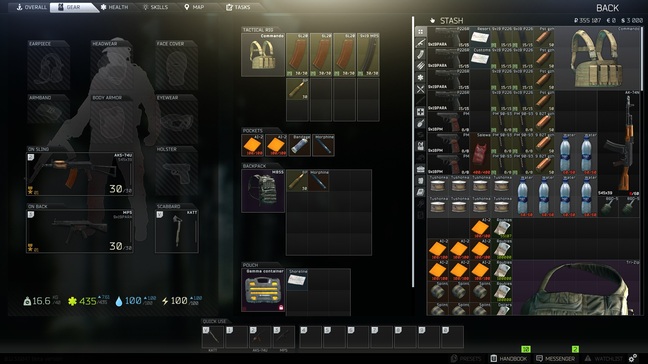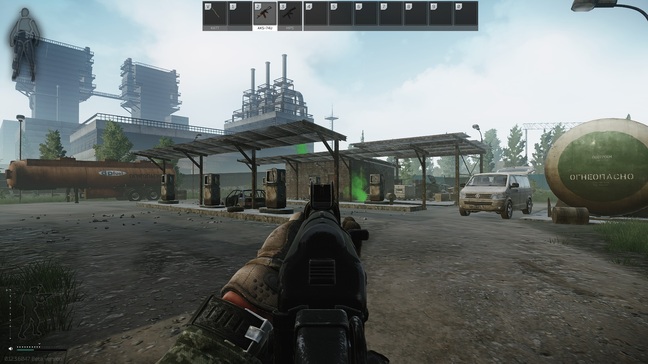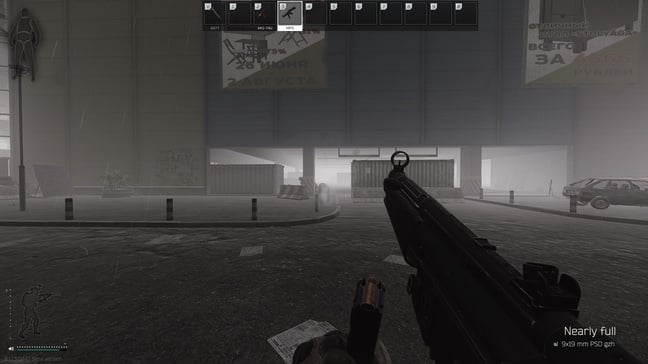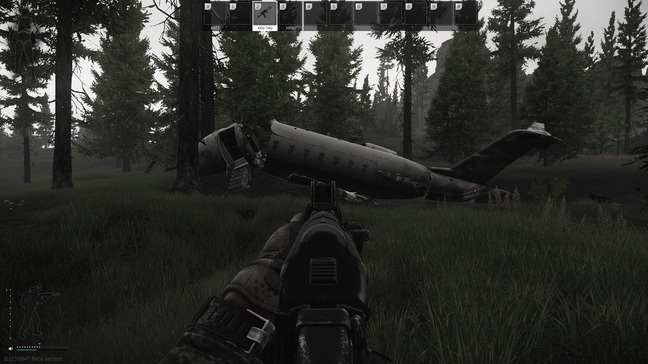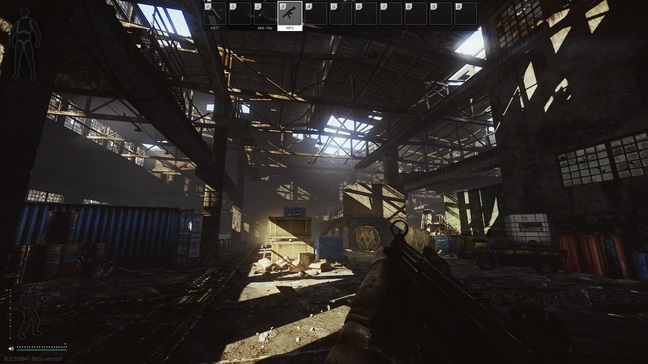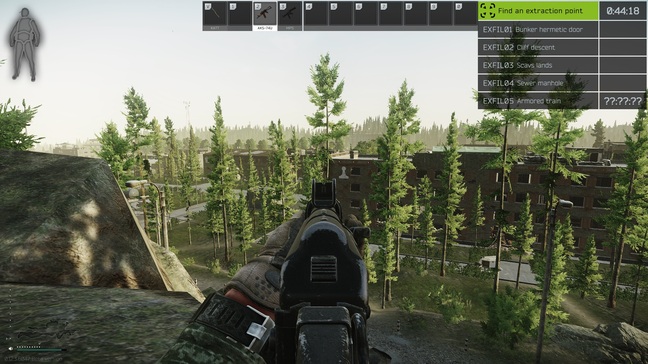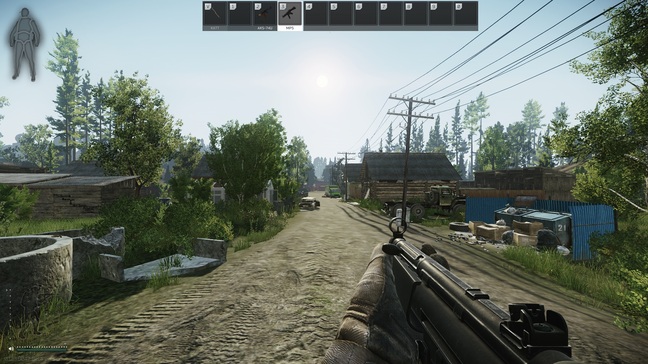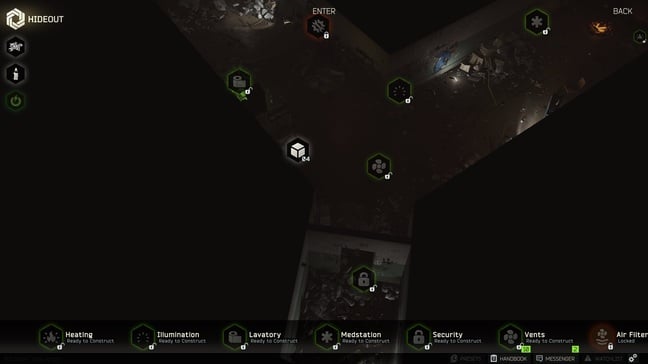This article is more than 1 year old
Escape From Tarkov: Hardest of the hardcore looter-shooter is spellbinding despite the punishing learning curve
Fun not required
The RPG Greetings, traveller, and welcome back to The Register Plays Games, our monthly gaming column. For the first time we feature a multiplayer title, and not a particularly forgiving one at that. I don't know why, I'm not even good at video games despite dedicating a chunk of my scant free time to playing them. Want to squad up? Someone send help, please, because I'm still trying to Escape From Tarkov.
DayZ has a lot to answer for, and whether that's good or bad is down to taste. The game, which started life in 2012 as a mod by Dean "Rocket" Hall for Bohemia Interactive's cumbersome milsim* Arma 2, plopped the poorly equipped and starving player into a huge map ravaged by a zombie virus and asked them only to stay alive.
Food, water, guns, ammunition and other equipment of varying quality would be scattered in buildings across the 225km2 post-Soviet state of Chernarus, but it wasn't just the wandering hordes of infected that survivors had to navigate. Humans are their own worst enemy after all and those resources would be savagely contested by other players. They could work together and communicate through the in-game VoIP or hunt each other down and steal the victim's painstakingly collected loot to buy themselves another night breathing.
Death was permanent. You couldn't respawn still hauling all the gear you spent hours accumulating. If you were killed or succumbed to the environmental threats, that was it, everything gone. New character at a random spawn point back to rock bottom, while your body remained for a period to be picked clean by other survivors.
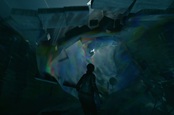
Throw a sofa at this guy with your mind. She's in Control. Oh look, now I've learnt to bloody fly. She's in Control
READ MOREWhen I first came across DayZ in its early state, I was stunned that no one had already thought to make this game. I even bought my first PC in years just to grab Arma 2 so I could play the mod. It did not run well for anyone.
The deceptively simple concept quickly evolved into social experiment and emergent gameplay, but PVPers** won for the most part. Those lucky enough to find a high-powered sniper rifle would camp out for hours just to ruin someone's day, confirming other players to be the greatest threat over zombies, starvation, dehydration and exposure. Many would string their quarry along too, pretending to be friendly until the other player let their guard down just long enough for an axe in the back or a 9x18mm in the skull.
It took the PC realm by storm and mods of the mod favouring all types of playstyle became rampant. One modder – going by his in-game handle, PlayerUnknown – used DayZ as the basis for a Hunger Games/Battle Royale-inspired variant, where the last man standing in a traitorous shrinking map was crowned victor. This closed the loop of open-ended gameplay in DayZ – something competitive gamers had yearned for after growing bored of merely surviving for as long as possible. The mod would later be remade in Arma 3.
DayZ Standalone would eventually crawl out of Early Access at the end of 2018 after five years in alpha, troubled by protracted development and issues with the Arma engine.
Is this starting to sound familiar? It should – even to casual observers. Brendan Greene went on to make PlayerUnknown's Battlegrounds (aka PUBG), a standalone and much-improved version of the DayZ and Arma 3 mods. So not only is DayZ responsible for the foundations of the modern survival genre – H1Z1, Subnautica, The Forest, Rust, 7 Days to Die and many more – but also the current rash of Battle Royale pretenders. That includes Fortnite, originally a crafting survival game, which shamelessly pinched the concept from PUBG and single-handedly turned publisher Epic into a powerhouse distribution platform to rival Valve's Steam.
But we're not here to talk about that. Over in Russia, at the height of DayZ fever, word spread among the community about an equally hardcore, multiplayer, milsim survival shooter in development. Around 2010, indie studio Battlestate Games was working on an ambitious single-player shooter set in a post-apocalyptic Russia, simply named Russia.2028 (which is a crazily optimistic deadline). However, a lack of funds meant that Russia.2028 would soon be abandoned. But Battlestate wasn't done, instead refocusing its efforts on something more manageable but set in the same universe. Enter Escape From Tarkov in 2015.
That year, pre-alpha footage started to trickle onto the internet and I, like many DayZ veterans, began to take note. There was an early, misguided belief that this could be the open-world survival milsim that we were hoping for while DayZ Standalone languished in development hell. The reality, however, was something far more unique.
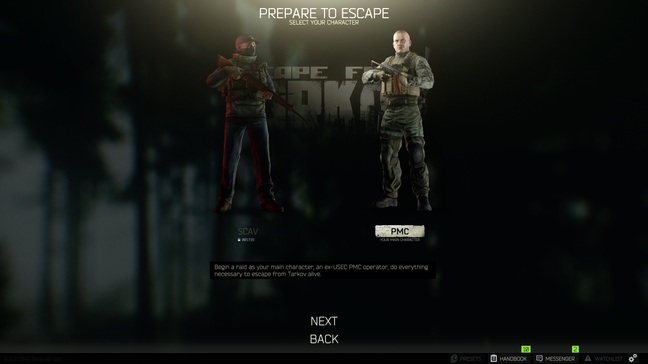
Before entering a raid, you've a choice between being a Scav (scavenger) or a PMC (private military contractor). Note that the Scav is on cooldown and can only be used once the timer is up
Skip forward another five years and somehow Escape From Tarkov is among the most-viewed games – up there with the aforementioned Fortnite, League of Legends and Apex Legends (yes, another PUBG ripoff) – on Twitch. Who'd watch someone else play a video game when they can play it themselves, right? Well, who'd watch someone participate in a physical sport when they could do that themselves?
Especially for multiplayer games like Tarkov, people want to see how professionals perform – to see what they can learn and how they can apply it to their own gameplay. The Amazon-owned streaming platform is also a handy barometer to gauge interest in any given game. Frankly, I was surprised to see it doing so well, considering that I had almost forgotten Tarkov was in development. I figured I'd wait until the official release fanfare before deciding whether to get involved in the game, now in closed beta, but its shock popularity signalled to me that it was likely in a decent state and worth investigating early.
So what is Tarkov (or EFT) about, and what sets it apart from its influences? Much like DayZ, EFT turns its new players into quivering balls of anxiety. There's the same apprehension before moving into a high-loot, high-traffic area, the same fear for losing your gear and the same clunky milsim controls taking cues from Arma – though much improved.
But where the end is clear in DayZ and Battle Royales (you die or you win), EFT is about escaping with your life. The clue is in the name. Players have a stash where their gear is safe, and from this a loadout can be equipped to bring into a raid. A raid describes a session on one of EFT's several maps – ranging from military base to forest, shopping mall, coastline resort and industrial areas – each with a variety of insertion and extraction points.
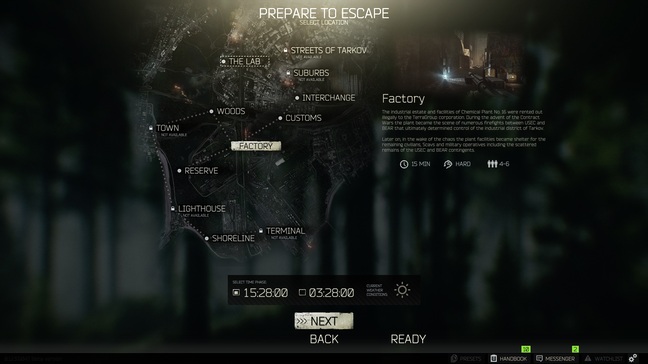
The map select screen – some are still under development and Labs requires a key card found in a raid to enter
The goal is to loot what you can and get out alive. Whatever you pick up, you can sell for in-game currency or store in your stash for use in future raids, but if you are killed it's lost – along with everything you brought in too, unless it was carried in your character's secure container. Placing looted items in there will allow them to be added to the stash even if you die. This is especially useful for small but valuable items like keys as much of the game's best gear is behind locked doors.
In theory, equipping yourself with more powerful firearms and armour should help tip the odds in your favour, though it also makes you an even more tantalising target for other players. There's the ability to insure items and receive them back after a raid has ended if you don't make it back, but that only works if they haven't been nicked.
Brutal. Indeed, Escape From Tarkov is the most complicated, hardcore, noob-unfriendly game I've ever encountered. Knowledge is power in EFT and it feels as though the first few weeks are spent not even playing it. There's no hand-holding. Literally nothing, not even an in-game map – not one you can bring up during a raid anyway. As a match begins, you are told where you can extract from (some extractions are marked "????" because they only open once a certain action has been performed within the level) – but where is the extraction called, say, "Passage between the rocks"? You have to find it yourself, silly. It's not like there are a minimum of seven veterans who have played since alpha, armed to the teeth roaming the vast map while you fumble and bumble looking for a way out.
No, wait, that's the game. Did I mention you only have about 30-45 minutes to do it in?
Not dedicating the time to learning how to play is a one-way ticket to the menu screen and bankruptcy (full disclosure: I have not once extracted yet, but can count the number of raids I've tried on one hand – I have kids, remember). Thankfully, the Tarkov community comes across as incredibly helpful and eager to do what they can to ease in newcomers. Playing EFT without a second monitor laden with player-made maps will not get you far. The game also has an offline mode where you can explore maps with AI enemies on or off – an invaluable tool if you want to give yourself even the slimmest chance of survival, but any loot or experience points gained during these sessions will not be carried over. This feature may not appear in the full release.
That's right, I almost forgot. EFT is PVE*** as well as PVP. The AI-controlled Scavs (scavengers) that lurk among the deserted buildings are crack shots. They might go down easier than a player with a carefully curated loadout, but they remain a threat to the unwary beginner nonetheless. Scavs are also Tarkov's saving grace in a way. Players can join games as a Scav with a random set of gear and play against the main player characters, referred to as PMCs (private military contractors), blending in with the NPCs**** and extracting with what they can grab, which is then transferred to your PMC's stash. Essentially a free bet, without which I don't imagine many people would still be playing.
As a milsim, EFT is mired in realistic ballistics and ammo types with different functions and damage values. You can peruse spreadsheets on that if you want to, but we're really only scratching the surface of how complex the game is. The weapon customisation system is probably one of the most in-depth ever seen and players also have a hideout that can be upgraded with materials found in raids, gradually generating money, food, water and equipment on its own. Managing this is a game in itself.
But moving along from the sheer insanity of the thing, Escape From Tarkov is gorgeous and the level of detail in the environments is staggering. The importance of EFT's sound design cannot be understated because everything a character or enemy does – lifting a gun to aim down sights, brushing undergrowth, walking on different types of surface – can be heard by players close enough. A crucial gear slot, if you can fill it, is the earpiece, which amplifies certain frequencies to make footsteps and the like clearer at a distance. The game is demanding even on powerful hardware, however, and its competitive nature means that most will benefit from turning graphical settings down. Animations and modelling are photorealistic – which would be great if you had the time and safety to slow down and appreciate them.
Despite my own limited success, I have become consumed with EFT. Promises of that big break haunt my dreams and waking hours – the moment when the game may even become, dare I say it, fun. Though it's as far from a casual feckabout as you can possibly get, I've massively enjoyed immersing myself in the culture and trying to learn the ropes. It's not without issues, though. The servers routinely take a dump, as do frames per second, and sometimes queues to enter a raid are ridiculous. But already the quality on show is high, and once Tarkov escapes beta as a complete game, I'm confident things will only improve.
Maybe one day it'll be me ruining your day by camping an extraction point. Never mind, eh? As the community mantra goes, despite all evidence to the contrary: "Enjoy yourself. It's just a game." ®
Bootnotes
* Military simulator
** Player versus player – thus a "PVPer" is someone who engages other players in combat
*** Player versus environment – AI enemies and other environmental threats
**** Non-player character – as above but not necessarily hostile
All screenshots were taken at medium quality for performance's sake. I would have put them on highest but I forgot, and you don't want to know how long it takes to put this article together every month. They were also "offline" because I'm not going to put my shit-tier loot at risk just to photograph a guy shooting me in the face.
